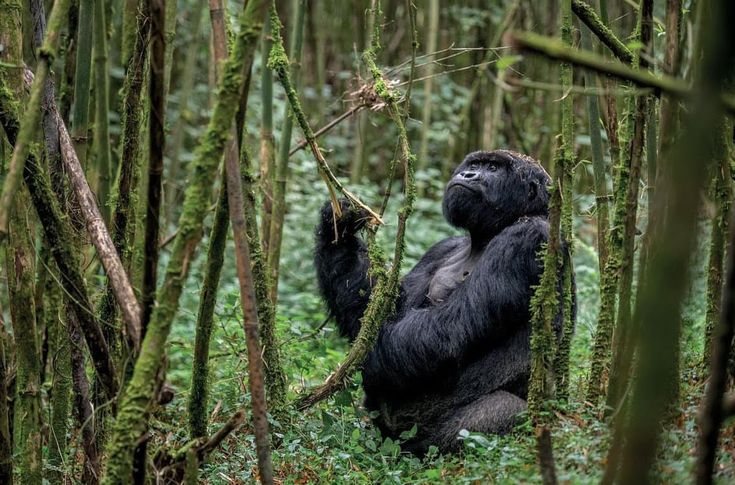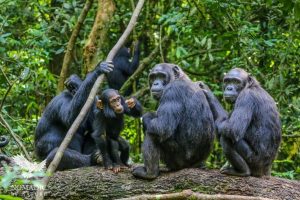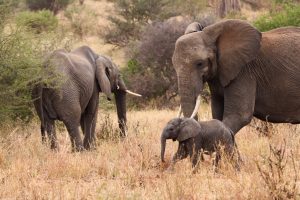Gorilla trekking is a dream for many travelers. The chance to walk through lush forests and observe endangered mountain gorillas in their natural habitat is unforgettable. But this adventure is not like a typical wildlife safari. It involves hiking through challenging terrain, sometimes for hours, and in remote, mountainous regions. Gorilla Trekking Experience
If you are considering a gorilla trek in Uganda, Rwanda, or the Democratic Republic of Congo, one important question comes to mind:
What fitness level is required for gorilla trekking?
This post breaks down the fitness requirements, the challenges you may face, and how to prepare physically and mentally. Whether you are a seasoned hiker or someone who exercises only occasionally, you’ll learn how to assess your readiness and enjoy the trek to the fullest.
Why is fitness important for gorilla trekking?
Gorilla trekking is not a walk in the park. It involves hiking through dense rainforests, climbing hills, and sometimes walking for hours in wet or muddy conditions. The trails are not paved, and you may need to navigate slippery slopes, streams, thick undergrowth, and uneven ground.
You’ll often be trekking at altitudes ranging from 1,500 to 2,600 meters (4,900 to 8,500 feet), which can make the hike feel more intense, especially for those not used to high altitudes.
Because of this, a reasonable level of physical fitness is important. Being fit not only helps you complete the trek safely but also allows you to enjoy the experience more. You’ll be able to focus on the beauty of the forest and the excitement of meeting the gorillas, rather than being distracted by fatigue. Gorilla Trekking Experience
What kind of fitness is needed for gorilla trekking?
You don’t need to be an athlete to go gorilla trekking. However, you should have at least a moderate level of fitness. This means:
- You should be able to walk for 2 to 6 hours in hilly or mountainous terrain.
- You should be comfortable hiking on uneven, muddy, or slippery trails.
- You should have good balance and coordination to navigate tree roots, rocks, and steep slopes.
- You should not have serious mobility issues or heart conditions that would limit physical effort.
Fitness for gorilla trekking is more about endurance and stability than speed or strength. If you can walk 8 to 10 kilometers (5 to 6 miles) on hiking trails with moderate inclines, you are likely fit enough for most treks. Gorilla Trekking Experience
Are all gorilla treks equally difficult?
Not all treks are the same. The level of difficulty depends on:
- The location of the gorilla family – Gorillas are wild animals. They move daily in search of food and shelter. Some groups may be close to the park entrance, while others may require longer hikes to reach.
- The terrain and vegetation – Some parks have dense forests with steep, slippery trails. Others have more open areas with shorter, less intense hikes.
- The weather conditions – Rain can make trails muddy and slow your pace. Even during the dry season, the forest is often wet and humid.
- The country and park you choose – For example:
- Rwanda’s Volcanoes National Park has bamboo forests and open terrain. The hikes are often shorter and easier.
- Uganda’s Bwindi Impenetrable Forest is dense and hilly. Treks here can be longer and more challenging.
- DRC’s Virunga National Park is wild and remote, with rougher trails and fewer visitors.
Before your trek, the park rangers will assign you to a gorilla group based on your fitness level. If you request an easier hike, they will try to match you with a nearby group.
Can older travelers go gorilla trekking?
Yes, many older travelers successfully complete gorilla treks. Age is not a barrier if your health is good and you prepare well. Some people in their 60s and 70s have even reported that the experience was the highlight of their lives.
To make things easier, you can:
- Hire a porter to carry your backpack and help you on steep or slippery sections. Porters are available at every park and are highly recommended.
- Use a walking stick, which is usually provided before the trek.
- Ask to be assigned to a shorter route when the rangers are grouping trekkers by fitness.
As long as you are reasonably active and have no major health problems, you can enjoy gorilla trekking at any age.
What should you do if you’re not very fit?
If you’re not in great shape right now, don’t worry. With some preparation, you can get ready in a few weeks or months. Here’s how to build up your fitness before your trip:
- Start walking or hiking regularly. Begin with flat surfaces, then add hills and longer distances. Aim for walks of 5 to 10 kilometers.
- Add stair climbing to improve your leg strength and endurance.
- Do bodyweight exercises, like squats, lunges, and planks, to strengthen your legs and core.
- Practice with a daypack so you get used to carrying a small load.
- Wear your hiking shoes before the trip to break them in and prevent blisters.
A simple fitness plan, followed three or four times a week, can make a big difference in your stamina and confidence. Gorilla Trekking Experience
What are the health considerations?
Before going on a trek, consider the following health tips:
- Consult your doctor before the trip, especially if you have a heart condition, asthma, joint problems, or other health issues.
- Get recommended vaccinations, such as yellow fever (often required for entry), hepatitis A and B, typhoid, and tetanus.
- Carry essential medications, including pain relievers, antihistamines, or prescriptions.
- Be aware of altitude effects. While the altitudes aren’t extremely high, some people may feel short of breath or tired more quickly.
If you feel unwell before your scheduled trek, inform your guide or ranger. Your safety is always the top priority.
What is the experience like during the trek?
On the day of your trek, you will start at the park headquarters for a short briefing. You will then be placed in a group of up to 8 people and guided by armed rangers and trackers.
The trek can take anywhere from 30 minutes to 6 hours, depending on where the gorillas are. Once you reach them, you’ll spend up to one hour observing them.
This hour is calm, quiet, and magical. You’ll watch gorillas feed, play, groom each other, and care for their young. Being so close to such powerful, gentle animals is deeply moving.
The hike back may be faster, but you’ll likely be tired. That’s why it’s important to be in shape—to fully enjoy the experience without feeling overwhelmed. Gorilla Trekking Experience
Can you hire help during the trek?
Yes, and it’s a great idea. You can:
- Hire a porter – They carry your bag and support you on steep paths. Porters are often former poachers now employed in conservation, so hiring one helps the local community.
- Use a walking stick – This adds stability, especially on wet trails.
- Take breaks often – Guides are patient and will stop when needed.
Hiring a porter is affordable, and it makes the trek much easier, especially if you’re carrying a camera or water bottles.
What if you have physical limitations?
If you have mobility challenges, gorilla trekking may still be possible. In Uganda and Rwanda, a sedan chair (gorilla stretcher) service is available. It’s a seat attached to poles, carried by four porters.
This allows travelers who cannot hike to be carried through the forest to see the gorillas. It is arranged in advance and at an extra cost. If you dream of seeing the gorillas but are unsure about your fitness, this option makes it accessible.
How fit should you really be?
To enjoy gorilla trekking, you don’t need to be an elite athlete. But you do need to be reasonably fit, active, and prepared. With moderate endurance and a bit of training, most people can do it.
This is not a race. The trek is done at a slow, steady pace with plenty of breaks. Rangers and guides are experienced and will adjust the pace to suit your group.
Gorilla trekking is a journey through wild, beautiful landscapes. It’s about more than reaching your destination—it’s about connecting with nature in one of the most personal ways possible.
If you’re healthy, mobile, and mentally ready for adventure, you’re already halfway there. Get out, train a little, pack well, and prepare for an unforgettable experience. Gorilla Trekking Experience




